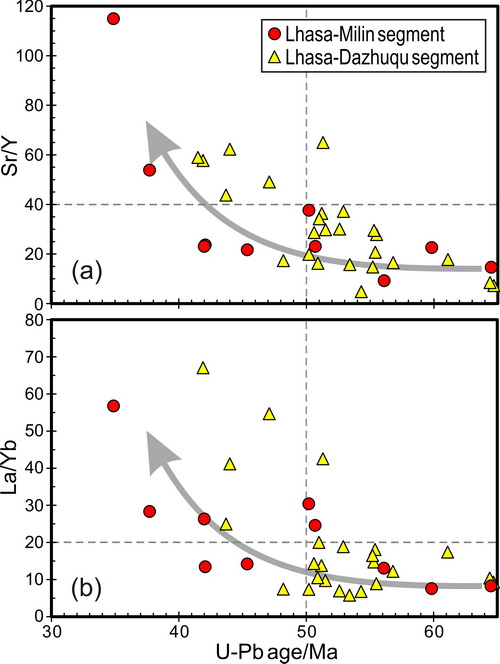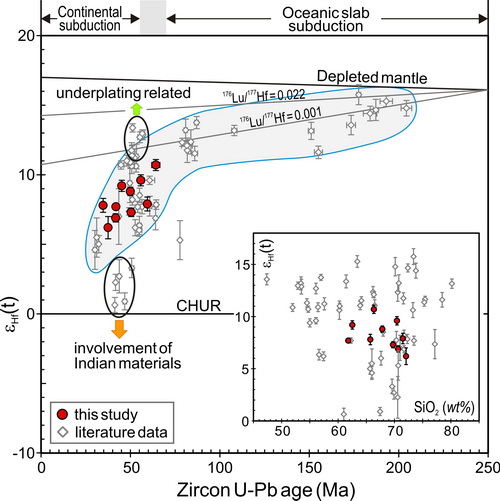Postdoctor JI Weiqiang and Professor WU Fuyuan report zircon U-Pb age and geochemical data of samples collected from the Gangdese batholiths, southern Lhasa terrane, a subset of which has already been dated at 65-41 Ma using zircon U-Pb geochronology, to contrain the timing and mechanism responsible for crustal thickening beneath southern Tibet.
Their new data indicate that the Gangdese magmatism lasted contiuously form ca. 65 to 34 Ma, during which geochemical evidence for crustal thickening is observed. Crustal thickening is best illustrated by the progressive increase in La/Yb and Sr/Y of the Earth to latest Eocene magmatic rocks, associated with the decrease in Hf isotopic ratios of Paleocene to Eocene magmatic zircons. They also identify in this study the oldest (ca. 51 Ma), “post-collisional” adakitic granitoids in the Gangdese batholiths, interpreted as products from partial melting of underplated basaltic lower crust. Therefore, a thickened crust likely existed by that time, at least locally, in the southern Lhasa terrane, Tibet.

Fig. 1. Plots of (a) Sr/Y and (b) La/Yb ratios vs. magmatic ages.(Image by JI)

Fig. 2. Binary plot of εHf(t) values vs. U–Pb ages of Gangdese batholith. (Image by JI)
Ji et al. Early Eocene crustal thickening in southern Tibet: New age and geochemical constraints from the Gangdese batholith. Journal of Asian Earth Sciences. 2012, 53: 82-95 (Download Here)